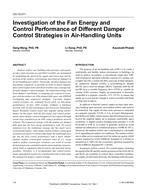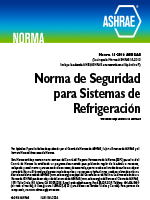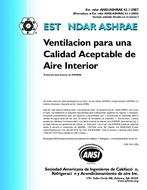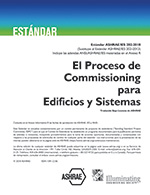Description
Outdoor airflow rate, building static pressure, and supply air- duct static pressure, as controlled variables, are maintained by modulating the speed of the supply and return fans and the position of the outdoor, recirculating, and relief-air dampers in an air-handling unit (AHU). Practically, the three dampers are interlinked completely or partially in order to match independent control inputs with controlled variables and, consequently, form five damper control strategies: the traditional strategy with three dampers interlinked, overlapping and sequenced strategies with the outdoor-air (OA) damper fully open, andASHRAE overlapping and sequenced strategies. Currently, damper control strategies are evaluated based solely on fan-energy performance. In fact, AHU systems configure a nonlinear network with variant system gains and interactive disturbance inputs. Resultant control issues may degrade energy performance. In this paper, both the fan energy and control performanceof five damper control strategies are investigated through steady-state simulation on an AHU using a nonlinear network solution. The sequenced strategy with the outdoor-air damper fully open has the best energy performance, with 4% power reduction over the traditional strategy, but has much worse control performance, with a large outdoor airflow control-gain variation ratio up to 8.9.Onthe other hand, the traditional strategy has the best control performance with a much smaller outdoor airflow control-gain variation ratio of 2.1. Large outdoor airflow control-gain variations can result in serious deviation between controlled setpoint and actual time response, which leads to equipment deteriorations and potential energy penalties. Therefore, it is recommended that control performance degradation needs to be considered in order to determine the optimal OA damper control strategy.
Citation: ASHRAE Transactions – Volume 121, Part 1, Chicago, IL
Product Details
- Published:
- 2015
- Number of Pages:
- 13
- File Size:
- 1 file , 4.1 MB
- Product Code(s):
- D-CH-15-011




